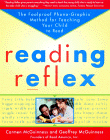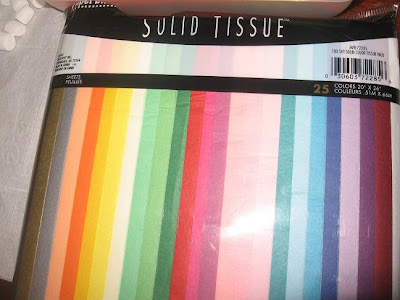Setting Goals
By Tasha Chinnock
Every support group, convention speaker and home school book or blog I have ever gleaned from has emphasized the need to set goals for yourself. There are handy tools all over the internet to help you graph out your objectives and how you will achieve them. It is important not only to set new goals for each new school year, but to reinforce your goals and reasons for homeschooling every year. This way, when you get weary or frustrated, you have something to look back on and remember that you truly are achieving the things you set out to do from the very beginning. So, with that intent, I present to you our goals.
My Reasons for Teaching at Home:
· God’s word makes teaching these children my responsibility above anyone else’s.
· I want my kids to look at life from a Biblical perspective.
· I want them to have the benefits of one-on-one teaching.
· I love spending time with my kids and watching them learn new things.
My Goals for This Year:
· Have a well-organized school area
· Develop a realistic schedule
· Get the kids excited about reading
· By the end of their year, Ardara and Huyler should be reading easy readers on their own
· By the end of the year they should be adding, subtracting, telling place value, time, and counting money easily.
· Ardara and Huyler will be journaling regularly
· They will learn to understand and apply Biblical principles in their own lives.
· Augie should be saying his alphabet, recognizing letters and numbers 0-10.
· All three kids should have improved drawing skills.
· All three kids will be able to recognize different musical instruments.
My Most Important Goal:
· Spending lots of time with my kids, having lots of fun learning about the history of the world, the phenomenon of the Bible, the beauty of creation, the wonder of God’s grace and the potential they each have to become something great.
 This one is mine. I put contact paper shapes down first and then painted it. I let the paint run under the contact paper some, and then I blotted off the excess paint and let it dry before removing the contact paper shapes. Then I went over the white places with a lighter blue paint.
This one is mine. I put contact paper shapes down first and then painted it. I let the paint run under the contact paper some, and then I blotted off the excess paint and let it dry before removing the contact paper shapes. Then I went over the white places with a lighter blue paint.
 This one is Huyler's. He used crumpled tissue paper on top of paint to create texture. Then he painted the tissue paper chartreuse and decided he hated how it looked so he peeled the tissue paper back off and the texture was still there, but nice and brown. Voila!
This one is Huyler's. He used crumpled tissue paper on top of paint to create texture. Then he painted the tissue paper chartreuse and decided he hated how it looked so he peeled the tissue paper back off and the texture was still there, but nice and brown. Voila! I was unsure that regular dish detergent would work for this rinse aid resist technique, so we gave it a try on a piece of gessoed cardboard. Paint, apply detergent to wet paint, allow to dry, then wipe/spray to rinse off the detergent and the paint underneath it. It worked, and Augie filled in the white areas with blue paint. We will use this technique for future pages. It will make a great bloody effect.
I was unsure that regular dish detergent would work for this rinse aid resist technique, so we gave it a try on a piece of gessoed cardboard. Paint, apply detergent to wet paint, allow to dry, then wipe/spray to rinse off the detergent and the paint underneath it. It worked, and Augie filled in the white areas with blue paint. We will use this technique for future pages. It will make a great bloody effect.




 One day we made a Rainbow Stick, which is much like a Rainstick, but more colorful. We used a paper towel tube, tons of toothpicks, and a handful of lentils. We painted the tube the colors of the visible spectrum, and then we poked the toothpicks through every-which-way and taped shut the ends with beans inside. Then we covered the pointy tips of all the toothpicks with hot glue “raindrops”. For the finishing touch, we glued cotton ball clouds on each end to cover up the tape. When we tilt the stick back and forth, it sounds like rain gently falling.
One day we made a Rainbow Stick, which is much like a Rainstick, but more colorful. We used a paper towel tube, tons of toothpicks, and a handful of lentils. We painted the tube the colors of the visible spectrum, and then we poked the toothpicks through every-which-way and taped shut the ends with beans inside. Then we covered the pointy tips of all the toothpicks with hot glue “raindrops”. For the finishing touch, we glued cotton ball clouds on each end to cover up the tape. When we tilt the stick back and forth, it sounds like rain gently falling. We also found two books of children’s poetry—one entirely describing colors, and the other describing seasons (including spring and rainbows). Since our Bible lesson was “Thank you God, for this beautiful world” we decided to write poems about things in nature. You can read the kids’ poems on their blogs.
We also found two books of children’s poetry—one entirely describing colors, and the other describing seasons (including spring and rainbows). Since our Bible lesson was “Thank you God, for this beautiful world” we decided to write poems about things in nature. You can read the kids’ poems on their blogs. 

 We saw loons and ducks and some little songbirds. We listened carefully to the songs they sang, drew pictures of everything we saw, and walked very quietly down the path. We had hoped to see the eagle that lives around there, but he wasn’t around. Ardara was a real scout and found the first feather AND a bird nest. Huyler led us off the main trail, closer to the water and found a nesting spot for ducks with TONS of feathers. We really hit the jackpot! We also played a game where you roll a ball to someone in the circle and they have to think of a type of bird before rolling it to someone else. We learned about the Dodo bird—pretty interesting stuff—and we made waterproof “feathers” by rubbing paper feathers with olive oil and then watching water bead off instead of soaking in.
We saw loons and ducks and some little songbirds. We listened carefully to the songs they sang, drew pictures of everything we saw, and walked very quietly down the path. We had hoped to see the eagle that lives around there, but he wasn’t around. Ardara was a real scout and found the first feather AND a bird nest. Huyler led us off the main trail, closer to the water and found a nesting spot for ducks with TONS of feathers. We really hit the jackpot! We also played a game where you roll a ball to someone in the circle and they have to think of a type of bird before rolling it to someone else. We learned about the Dodo bird—pretty interesting stuff—and we made waterproof “feathers” by rubbing paper feathers with olive oil and then watching water bead off instead of soaking in. 




 Then we each contributed 100 of something to the festivities—Sticker collection books from Mom,
Then we each contributed 100 of something to the festivities—Sticker collection books from Mom,  marbles from Augie,
marbles from Augie, 
 and poker chips from Huyler.
and poker chips from Huyler.  We divvied up 100 cereal balls and 100 mini marshmallows
We divvied up 100 cereal balls and 100 mini marshmallows  and got to work on a 100-piece puzzle!
and got to work on a 100-piece puzzle! 

 Well, we can count to 100 now, can you?
Well, we can count to 100 now, can you?



















